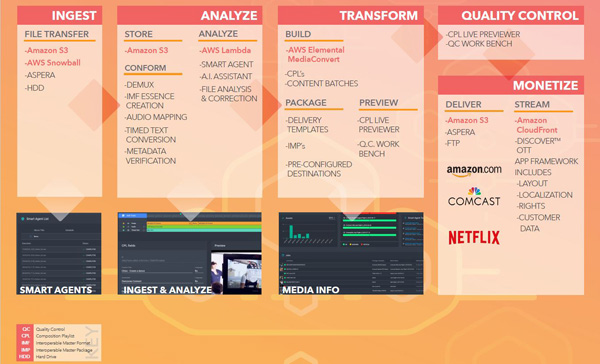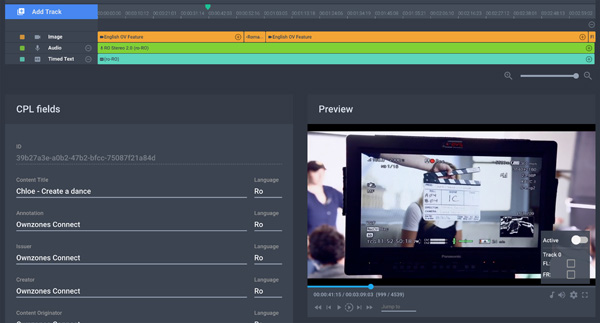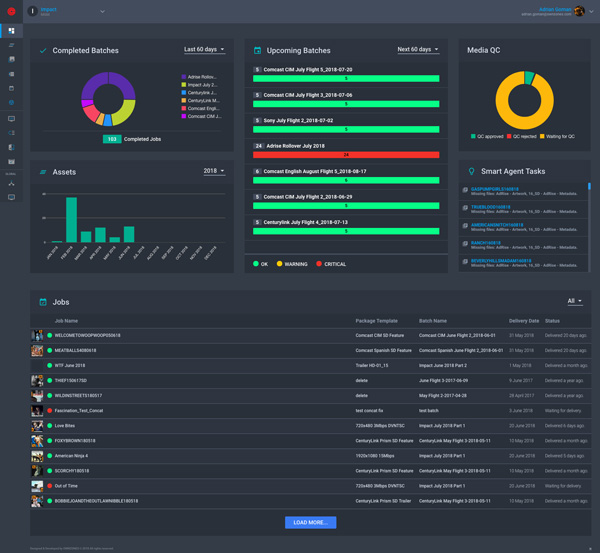Magnolia Defines Independent OTT with OWNZONES and AWS Elemental

Skate Kitchen
Since launching in 2001 Magnolia Pictures has become a major distributor of independent films in the US market, and is now a subsidiary of American media company 2929 Entertainment. Magnolia combines business strategy with an emphasis on new artists and original points of view, and has brought audiences such movies as 'Tangerine', 'Frank' and 'Lucky', and memeroable documentaries including 'Blackfish', 'Life Itself' and 'I Am Not Your Negro'.
In 2016, Magnolia entered the OTT video market in order to generate new revenue from its rapidly growing content library. Although the OTT services industry has become fragmented and competitive, with a recognised brand and a loyal following among a diverse audience, the company feels they have a chance to stand out. Rather than relying only on outside subscription services, Magnolia planned to launch OTT services under its own name.
Independent OTT
Entering the OTT market independently presented Magnolia with several challenges that, interestingly, reflect the challenge and opportunity of OTT for many content owners. First, the infrastructure required to manage, process and distribute their library would need to be either built from the ground up, or contracted through a third party. A top quality viewing experience would be another priority, consistent with their reputation for premium quality content. Its infrastructure would also need to be able to grow and evolve with the company, its content and the ability to take advantage of new business opportunities.
Furthermore, Magnolia's diverse library – encompassing comedy, drama, action, documentary and other genres in English and foreign-language productions – doesn't necessarily suit a single-channel approach to marketing. The international nature of its content compared to other American film distributors makes a sound case for global distribution.

OWNZONES Connect Platform workflow
Magnolia is working with OWNZONES Media Network to help set up its OTT business. OWNZONES, a media systems provider for the worldwide media and entertainment industry, develops delivery systems for video content across all OTT platforms. The company deployed OWNZONES Connect Platform, proprietary, cloud-based media logistics software that Magnolia is using to customise OTT services to meet their own particular challenges and business requirements.
Multiple Platforms, Multiple Channels
Magnolia was able to build its OTT services in a way that allows them to serve multiple platforms. This means they can both deliver device-optimized audio and video to web interfaces, and set up app-based distribution through Amazon FireTV, Roku, iOS and Android devices and other internet-connected screens.
The company also adopted a channel-based model for its OTT titles, establishing distinct subscription-based channels for each of its key genres – DOX for documentaries, an action movie channel Warriors and Gangsters, Monsters and Nightmares showing horror films; LOLFlicks for comedy movies and TV programming and Magnolia Selects, a library of the company’s most famous feature films.
“When we entered the OTT market, we saw systems infrastructure that required a massive upfront investment and neither allowed enough flexibility to adapt to our business, nor supported the kind of quality our audiences expect,” said Jeff Cuban, COO of Mark Cuban Entertainment Properties, another part of 2929 Entertainment. “OWNZONES allowed us to start small and experiment, then scaled as our services and subscriber based expanded globally, with a pay-as-you-go cost structure.”

Ingest and analysis - composition playlists
Transcoding Assets
Deployed entirely within the cloud, the OWNZONES Connect Platform relies on AWS and AWS Elemental for all of Magnolia’s OTT services. One of the key responsibilities of the workflow is transcoding media assets. By converting each asset from its source format into different versions that cover a generous range of formats and quality levels, Magnolia can support a nearly any connected device and network bandwidth to deliver viewing experiences that are optimized for individual screens and connections.
As a first step, OWNZONES needed to transcode the whole Magnolia content library, which comprised more than 40,000 minutes of content. Beyond size, the nature of Magnolia’s content library also so made the transcoding process more complex. Magnolia’s films originate from different post-production houses, and each one is produced to individual specifications for aspect ratio, colour, screen resolution, audio levels and features, player compatibility and a long list of other variables, each of which must be accounted for in creating the parameters for transcoding.
Magnolia’s transcoding workload could have required months of time- and labor-intensive processing to complete. Instead, OWNZONES ran multiple transcode processes concurrently by using AWS Elemental MediaConvert service, and automated key steps to avoid repetitive, time-consuming manual tasks. As a result, OWNZONES prepared the Magnolia library for multiscreen distribution in less than one-third the time of their earlier approaches. New films are also ingested quickly and processed for distribution to Magnolia’s standards using the same process.
AWS Elemental MediaConvert is scalable file-based video processing developed with the functionality needed for premium content experiences in the cloud - for example, broadcast codecs that support increased bit depth and HDR content creation, still graphic overlays, professional audio, digital rights management and closed captioning support. Its main purpose is handling content from a range of sources and input formats and producing various adaptive bitrate (ABR) packaging output formats for high-quality content delivery onto primary and multiscreen devices.

The Shoplifters
Connect Workflow
The OWNZONES Connect platform has software that covers the tasks in a complete custom workflow. API integration with the OWNZONES platform, and its ability to support the transcode profiles and asset conversions Magnolia requires, turns MediaConvert into a key part of Magnolia's workflow.
The whole process begins when source files and accompanying metadata are uploaded to Amazon Simple Storage Service (S3). Amazon's Simple Notification Service (SNS) and Simple Queue Service (SQS) issue notifications triggering automated ingests according to predefined parameters. These parameters are based on the user's key variables for each asset, like measures of quality including luminance, cropping, drop frame, demuxing and caching, plus destination requirements, transformations and transcodes needed to derive a conformed file.
A quality control (QC) step validates mezzanine files, which are submitted for transcoding. Files are transcoded into adaptive bitrate (ABR) bouquets and validated by a second QC step followed by application of digital rights management (DRM) protections.
Global Reach
Content streams are delivered to consumers through Amazon CloudFront and other CDNs as part of OWNZONES' multiple-CDN distribution. This approach is what now affords Magnolia’s OTT channels consistently-performing reach across the Americas, Europe and Asia, and will allow Magnolia to eventually extend channels worldwide, based on subscriber demand.

Media processing information
“OWNZONES handles the heavy lifting of OTT processing and delivery, and our team spends more of its time on innovating our services and creating better viewing experiences,” said Jeff Cuban. “Because the combination of CloudFront’s 55 availability zones and the robust encoding profiles OWNZONES allows adaptive bit rate laddering, encoded through AWS Elemental MediaConvert, we have been able to deliver streams to any device or country reliably.
“Encoding optimisations are achieved by increasing or decreasing the bitrate of each bitrate ladder entry based on a measurement of complexity for each input file. The service model keeps our costs reasonable and gives us a chance to focus on the future as systems and methods continue to change more frequently.” www.elemental.com




